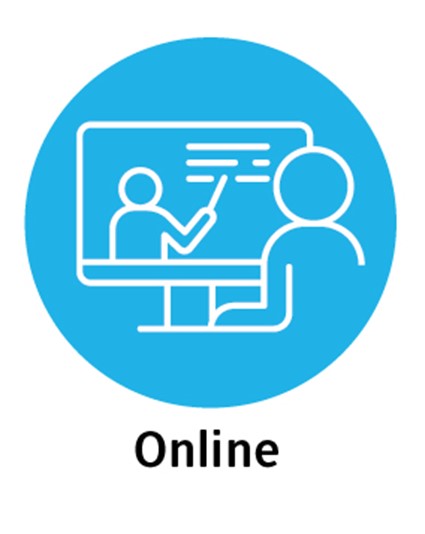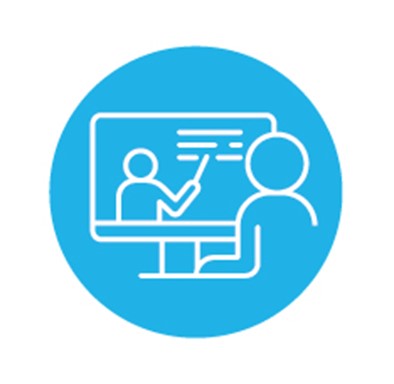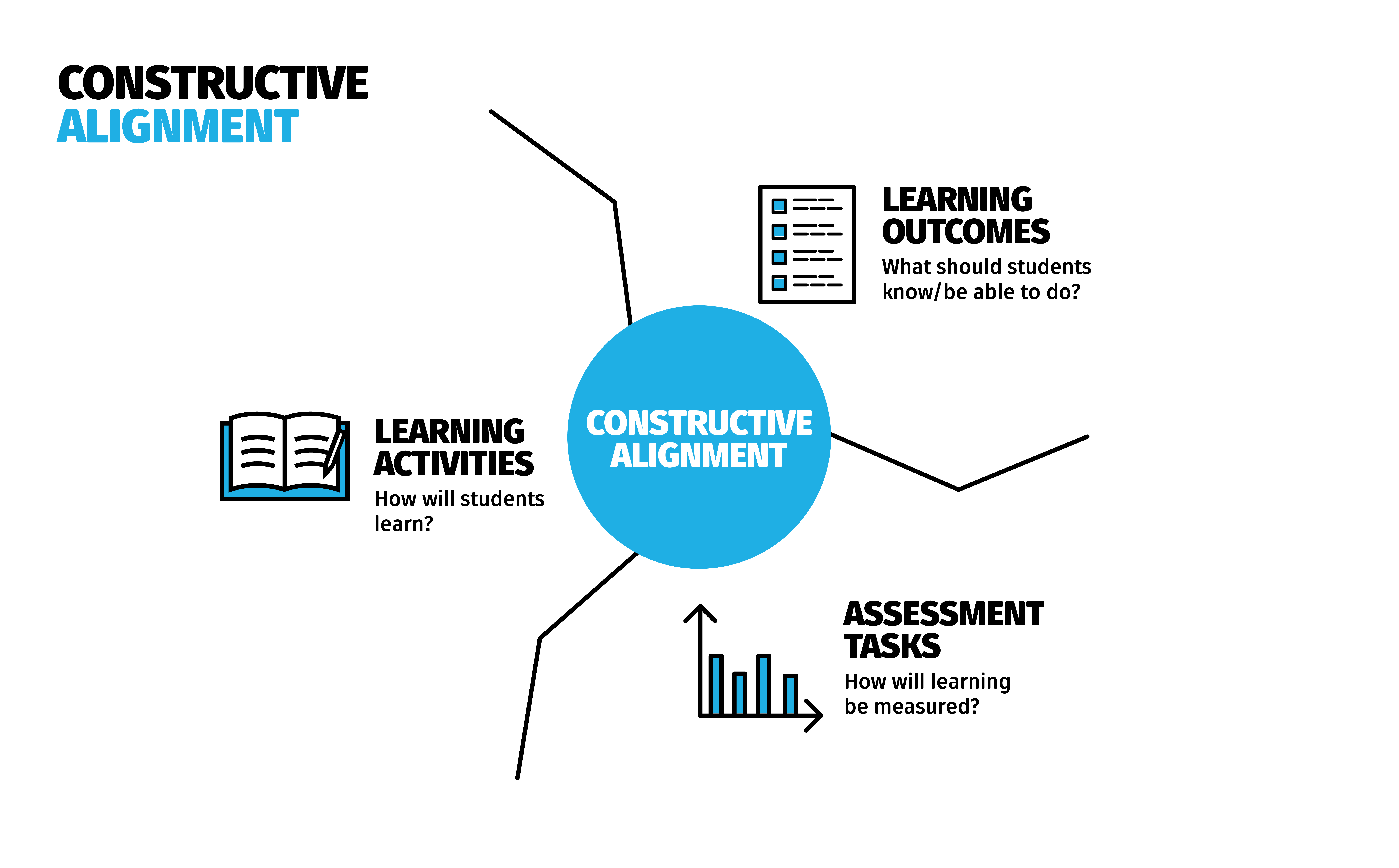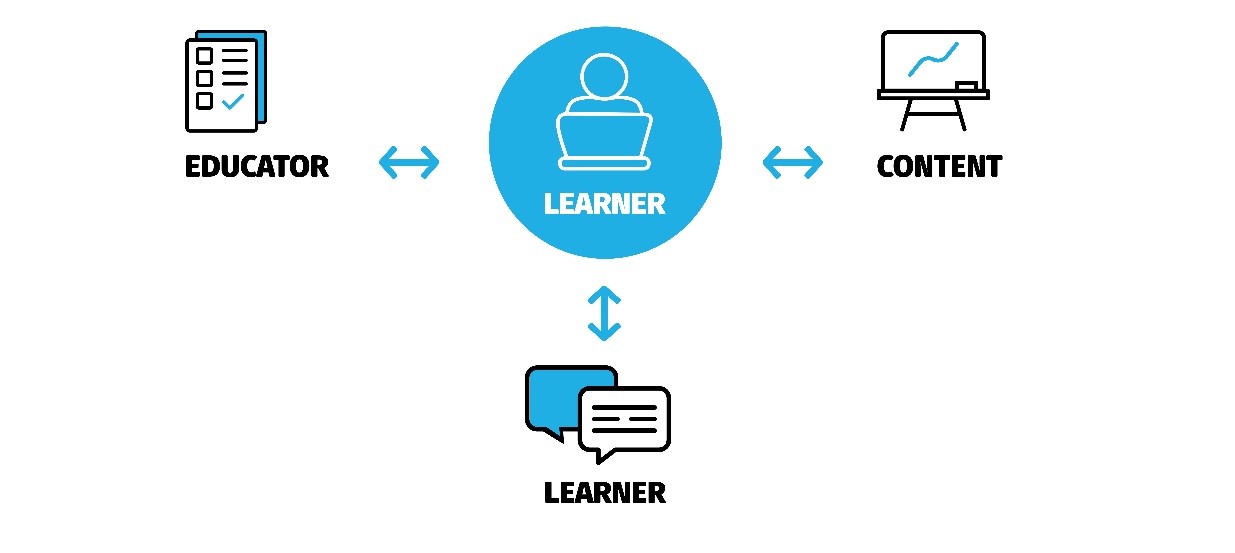
Teaching and research
COURSE DELIVERY MODE
Flexible Online
 | CONTENT DELIVERY and ACTIVE LEARNINGAll interaction with content, peers and instructor is via LMS site, with no timetabled sessions. Self-paced learning, within the constraints of a typical term including fixed assessment due dates. |
Flexible (or asynchronous) online delivery probably most closely aligns with the traditional understanding of online delivery. In a typical online flexible course, students work through the content in a self-paced fashion. They have the flexibility to participate in the course at times that suit them, within the limitations of assessment due dates, key term dates, etc.
| Description | In Person Attendance (Physical space required) | Timetabled Component | |
|---|---|---|---|
| Content Delivery and Active Learning  | Content is delivered online via LMS (e.g. videos, readings, podcasts, etc) for self-paced engagaement. Untimetabled, self-paced online learning activities. |
|
|
Flexible online delivery offers the greatest level of flexibility and can be particularly beneficial to students who are juggling multiple commitments. This delivery mode is particularly common for postgraduate students, but the potential benefit to our growing number of non-school leaver undergraduate students should not be discounted.
Taking an “online first” approach to content delivery can provide significant efficiencies for teaching staff. Online access to, and engagement with, course materials alleviate the need for in-person delivery. Content delivered for fully online courses can also be re-used for other cohorts (e.g. students studying the same course via an on campus blended delivery).
When students have the option to engage with content in their own time, there can be issues with timely engagement. It is valid for teaching staff to be concerned that students may not review all necessary content before participating in the scheduled tutorial/lab/workshop. Student participation can be improved by embedding active learning opportunities and engaging content, and ensuing expectations of students are communicated clearly. It may also be appropriate to embed formative or low weight progressive summative assessment throughout your course, to motivate students to complete certain activities by a particular time.
Ensuring that a range of engaging content is used to present material within your course does take time. However, this does not always require “creation” but also “curation”. There are a range of readily available resources (eg YouTube videos) that may be suitable for use (with due consideration of copyright compliance) in lieu of having to create materials from scratch. These can be supplemented with additional resources (such as podcasts and short pieces to camera) that can provide additional context for your students.
Asynchronous participation can mean that student enquiries land with educators at all hours of the day and night. Educators can combat the somewhat ad hoc element of this delivery mode by clearly expressing their requirements for how communication will be handled within the course (i.e. email response times, a requirement to post questions in discussion boards rather than email, communicating the timing and frequency with which educators will engage with the discussion boards).
Regardless of the mode of delivery, ensuring constructive alignment should be a primary focus of any course design work. Constructive alignment is a design approach that ensures alignment between learning outcomes, teaching methods, and assessments, fostering meaningful learning by connecting these elements in a coherent and purposeful way.

What should you consider when designing a course for Flexible Online delivery:
- Self-Paced Learning: Design the course to be self-paced, allowing students to progress through the materials at their own speed within the given timeframe. Clearly communicate the expectations and suggested pacing to guide students effectively.
- Consider Timing: As students are not required to engage in regularly scheduled sessions (e.g. a one hour lecture and a 2 hour tutorial), care must be taken when considering the time it will take for students to actively engage in the online course. How long will it take for students to complete the online activities?
- Engaging Online Content: Design and curate online content in various formats, including text, videos, podcasts, readings, slides, or interactive activities. Create engaging and interactive online materials that encourage student engagement and active learning in the absence of traditional on-campus lectures. Consider breaking down content into smaller pieces that build towards a full concept or topic.
- Weekly Learning Outcomes: Clearly express what your students should be able to achieve by the end of each week, how the teaching and learning activities will contribute to these outcomes, and how weekly learning outcomes align with and contribute to the overall course learning outcomes.
- Asynchronous Communication Channels: Utilise Canvas discussion boards or other asynchronous communication tools such as PollEverywhere to facilitate interaction and collaboration among students and between students and educators. Encourage students to actively participate in discussions, ask questions, and provide peer feedback.
- Timely Feedback and Support: Ensure that you embed opportunitiestimely and constructive feedback to students on their assessments, discussion board contributions, or any other asynchronous interactions. Offer support through regular communication, virtual office hours, or individualized feedback to address questions and concerns. Building and maintaining an educator presence is essential in asynchronous courses.
- Collaborative Learning: Encourage collaborative learning experiences by incorporating activities and projects that require students to work together at times that suit them. This fosters teamwork, communication skills, and deeper understanding through peer interaction.
- Reflection and Evaluation: Incorporate opportunities for students to reflect on their learning experiences and evaluate their progress. Encourage self-assessment, peer feedback, and facilitate class discussions. Also consciously plan to reflect on your own teaching practices throughout the semester.
Learning Design and Teaching Innovation can assist using our Course Design Toolkit.
Regardless of the mode of delivery, all University of Newcastle courses include a Canvas course site, and each site should be developed with consideration of the University’s Course Site Quality Principles.
The Canvas course site will be your students’ first interaction with the course and it is vital that the site is used to create a positive first impression.
- Course Introduction: A well thought out, welcoming, clear and structured introduction in the course site can go a long way to ensuring that your expectations of learners are well understood. It can also help minimise the time needed to address administrative questions during the first few weeks of term.
- Clear Navigation and Organisation: Ensure that the Canvas site is well-organized. Use a logical modular structure that is intuitive for students to navigate. Use simple statements to outline your expectations of students for each week/module. Do your students know what they need to do this week?
- Clear Instructions and Expectations: Provide clear instructions and expectations for each learning activity or assignment. Clearly communicate the purpose, guidelines, and evaluation criteria to help students understand what is required and how they will be assessed.
- Discussion boards, announcements, and reminders. Clearly articulate how you will utilise Canvas communication channels within your course and use these consistently. Encourage students to participate in these discussions by posing thoughtful questions, sharing relevant resources, or providing prompts for reflection and peer interaction. Set up dedicated discussion boards or online forums within Canvas to encourage asynchronous student interaction and collaboration. Create separate spaces for general discussions, module-specific discussions, or group projects, fostering a sense of community and peer learning.
- Digital Content Accessibility: It is important to keep accessibility in mind when creating digital content for Canvas. Consider providing alternative formats for text-based content, such as transcripts for videos or audio recordings, and adopt digital practices when creating learning materials that meet accessibility guidelines.
Interactive learning activities promote active learning and engagement through three types of interaction: learner-content, learner-educator, and learner-learner. That is, your students should be given opportunities to explore a concept from different angles.
FLEXIBLE ONLINE

Learner-Educator |
|
Learner-Learner  |
|
Learner-Content  |
|
- Choosing the right Educational Technology
- Using YouTube - What you need to know
- All Active Learning Resources
- Desktop Video Production Tips
- TEQSA Guideance Notes and Good Practice Hub
- Five conditions to enhance online student engagement
- Wiley - Tips for Creating an Engaging Asynchronous Online Learning Environment
The University of Newcastle acknowledges the traditional custodians of the lands within our footprint areas: Awabakal, Darkinjung, Biripai, Worimi, Wonnarua, and Eora Nations. We also pay respect to the wisdom of our Elders past and present.